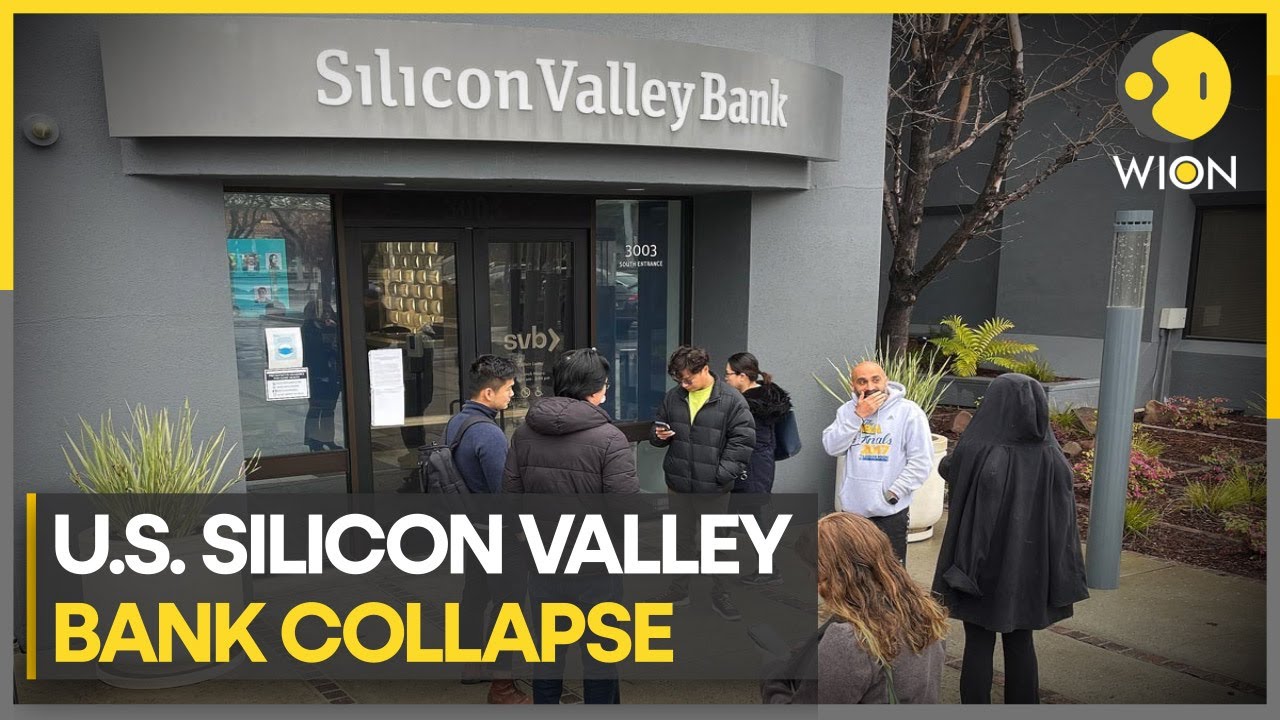The Silicon Valley Bank collapse, a seismic event in the tech industry, sent shockwaves through the financial world. This once-thriving institution, a cornerstone for startups and tech giants, crumbled under the weight of rising interest rates, risky investments, and a sudden surge of deposit withdrawals.
The collapse exposed vulnerabilities within the financial system and raised crucial questions about risk management, regulatory oversight, and the future of venture capital funding.
SVB’s demise was a complex interplay of factors. The bank’s reliance on a concentrated client base in the tech sector, coupled with its aggressive investment strategy, made it particularly susceptible to market fluctuations. As interest rates climbed, the value of SVB’s bond portfolio plummeted, leading to significant losses.
This, combined with a wave of withdrawals by panicked depositors, ultimately proved to be the bank’s undoing.
The Silicon Valley Bank Collapse: A Deep Dive
The collapse of Silicon Valley Bank (SVB) in March 2023 sent shockwaves through the tech industry and the broader financial system. It was the largest bank failure since the 2008 financial crisis, raising concerns about the health of the banking sector and the potential for systemic risk.
This article delves into the events leading up to the collapse, its causes, its impact, the responses, and its potential future implications.
Overview of the Silicon Valley Bank Collapse
SVB was founded in 1983 and quickly became a dominant force in the tech industry. It specialized in providing banking services to startups, venture capital firms, and other technology companies. The bank’s success was closely tied to the growth of the tech sector, and it became known for its deep understanding of the industry and its willingness to take on risk.
However, a series of events in recent years led to the bank’s downfall. Rising interest rates, declining valuations in the tech sector, and a surge in deposit withdrawals all contributed to the bank’s liquidity crisis. The bank’s reliance on venture capital funding and its concentration in the technology sector also played a role in its collapse.
- January 2023:SVB announced a $1.8 billion loss on its investment portfolio due to rising interest rates.
- March 8, 2023:SVB announced a $2.25 billion capital raise to offset its losses.
- March 9, 2023:SVB’s stock price plummeted by over 60% after the capital raise announcement.
- March 10, 2023:Depositors began withdrawing funds from SVB, fearing for the bank’s stability.
- March 10, 2023:SVB was seized by regulators and placed into receivership by the FDIC.
Causes of the Collapse
The collapse of SVB was the result of a confluence of factors, including:
- Rising Interest Rates:The Federal Reserve’s aggressive interest rate hikes in 2022 and 2023 put pressure on SVB’s investment portfolio, which was heavily invested in long-term bonds. As interest rates rose, the value of these bonds declined, resulting in significant losses for the bank.
- Venture Capital Funding:SVB’s client base was heavily reliant on venture capital funding. As the tech sector cooled and valuations declined, venture capital funding slowed, leading to a decrease in deposits at SVB.
- Concentration in Technology:SVB’s focus on the technology sector made it particularly vulnerable to the fluctuations in the tech industry. The bank’s concentrated exposure to a single sector meant that its fortunes were closely tied to the performance of that sector.
- Risk Management Practices:SVB’s risk management practices have been criticized for being too aggressive, particularly in its investment portfolio. The bank’s reliance on long-term bonds, which are more sensitive to interest rate changes, made it vulnerable to losses when interest rates rose.
Impact of the Collapse

The collapse of SVB had a significant impact on its clients and the broader tech industry. It also raised concerns about systemic risk in the financial system.
- Immediate Consequences:SVB’s clients, including startups and venture capital firms, faced immediate financial difficulties as their deposits were frozen. The collapse also disrupted the flow of capital to the tech sector, potentially hindering innovation and growth.
- Systemic Risk:The collapse of SVB raised concerns about the potential for systemic risk, as it highlighted the interconnectedness of the financial system. If a large number of banks were to experience similar liquidity crises, it could have a domino effect, leading to a broader financial crisis.
- Regulatory Oversight and Risk Management:The collapse of SVB has led to calls for greater regulatory oversight of banks, particularly those with concentrated exposures to specific sectors. It has also highlighted the importance of sound risk management practices, including stress testing and capital adequacy requirements.
- Lessons Learned:The SVB collapse provides valuable lessons about the importance of diversification, prudent risk management, and the need for robust regulatory oversight in the banking sector.
Final Wrap-Up
The Silicon Valley Bank collapse serves as a stark reminder of the interconnectedness of the global financial system. It underscores the importance of robust risk management practices, particularly in sectors prone to rapid growth and volatility. The collapse also highlights the need for regulators to adapt to evolving financial landscapes and ensure that institutions are adequately prepared for unexpected shocks.
The lessons learned from this crisis will undoubtedly shape future regulations and industry practices, aiming to prevent similar catastrophes and foster a more resilient financial ecosystem.












